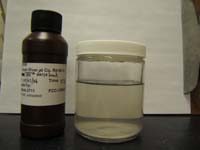Minnesota Water Science Center

Emerging Contaminant and Endocrine StudiesMinnesota PROJECTSUSGS IN YOUR STATEUSGS Water Science Centers are located in each state. 
|
Reconnaissance of Organic Wastewater Indicators in Minnesota Water ResourcesThe U.S. Geological Survey, Minnesota Pollution Control Agency, and the Minnesota Department of Health conducted a reconnaissance study to determine the presence of 91 organic wastewater indicator chemicals at 65 sites in Minnesota. Samples were collected in Minnesota during October 2000 through November 2002 including wastewater treatment plant influent and effluent; landfill and feedlot lagoon leachate; surface water; ground water (underlying sewered and unsewered mixed urban land use, a waste dump, and feedlots); and the intake and finished drinking water from drinking water facilities. There were 74 chemicals detected among all samples that represent a wide variety of use. Samples generally comprised a mixture of chemicals (average of 6) and 90 percent of the samples had at least one chemical detected. Concentrations for detected chemicals generally were less than 3 micrograms per liter. Wastewater treatment plant influent and effluent, landfill leachate, and ground water underlying a waste dump had the greatest number of chemicals detected. Chemical detections in ground-water were low except underlying the one waste dump studied and feedlots. There generally were more chemicals detected in surface water than ground water, and there were twice as many chemicals detected in the surface water sites downstream from wastewater treatment plant effluent than at sites not directly downstream from effluent. Few chemicals were detected in drinking water. Results of this study indicate ubiquitous distribution of measured OWCs in the environment that originate from numerous sources and pathways. The data indicate WWTP effluent is a major pathway of OWCs to surface waters and that landfill leachate at selected facilities is a potential source of OWCs to WWTPs. Aquatic organism or human exposure to some OWCs is likely based on the observed OWC distribution. Few aquatic or human health standards or criteria exist for the OWCs analyzed, and the risks of many of the compounds to humans or aquatic wildlife are not known. Some OWCs detected in this study are endocrine disrupters and have been found to disrupt or influence endocrine function in fish. Available PublicationsLee, K.E., Barber, L.B., Cahill, J.D., Furlong E.T., Kolpin, D.W., Meyer, M.T., Zaugg, S.D., 2004, Presence and distribution of organic wastewater compounds in wastewater, surface, ground, and drinking waters, Minnesota, 2000-02: U.S. Geological Survey Scientific-Investigations Report 2004-5138. |